INSTRUCTIONS AND PROPHECIES OF THE Blessed MOTHER ALIPIA GOLOSEEVSKY, Kyiv...

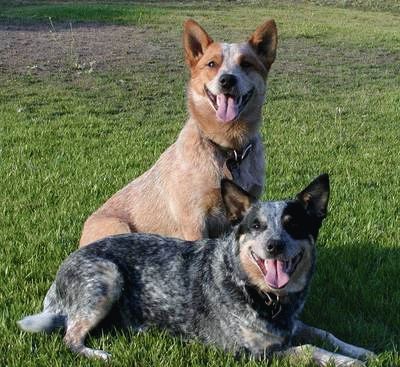
Australian shepherd dog or Australian Heeler(Eng. Australian Cattle Dog) breed originally appeared in Australia. A shepherd dog that helped drive herds through harsh lands. Medium-sized and short-haired, they come in two colors - blue and red.
The history of the Australian Kettle Dog began in 1802 when George Hall and his family emigrated from England to Australia. The family settled in newly colonized New South Wales with the goal of raising livestock to sell in Sydney, at the time Australia's largest city. The difficulty was that the climate is hot and dry, in no way comparable to the green and humid fields of the British Isles. In addition, cattle had to graze on vast and unguarded plains, where danger lay in wait. Plus the problems of collecting and transporting livestock, through hundreds of kilometers of harsh lands.
The brought shepherd dogs were poorly adapted to work in such conditions, and there were simply no local dogs. Animal husbandry was located near major cities where cattle grazed under the supervision of children during the day. Accordingly, all the service of dogs was reduced to guard and protection from wild dingoes.
Despite the difficulties, the family remains determined, courageous and demonstrates strength of character. The most distinguished seventeen-year-old Thomas Simpson Hall (1808-1870), he explores new lands and pastures, lays routes to the north of the country.
While moving north promises great benefits, there is one problem to get to millions of acres of land. At that time, it was not possible to bring cattle from there to Sydney. Railways does not exist and the only way is to carry the herd hundreds of miles. However, these animals are different from those that grow in pens, they are semi-wild, they scatter. Thomas realizes that in order to get his cattle to market, he needs hardy and smart dogs, able to work under the scorching sun and manage the bulls. In addition, they are horned bulls, which creates problems for both shepherds, dogs and the bulls themselves. A large number of they are killed on the way.
To solve these problems, Thomas starts two breeding programs: the first line of dogs for working with horned animals, the second for hornless ones. Europe is famous for its herding dogs and Smithfield collies come to Australia. Outwardly very similar to bobtails, these collies are widely used in England for livestock. However, Thomas Hall finds them unsuitable for use, since in England they work at much smaller distances and stages and they simply do not have enough endurance for hundreds of miles of travel. In addition, they do not tolerate heat well, because in England the climate is completely different. It is for these reasons that Thomas Hall decides to create a dog for his needs and starts the program.
It is worth noting that he is not the first to try to create such a breed. James Timmins (James "Jack" Timmins 1757-1837), before him crosses dogs with wild dingoes. The resulting mestizos were called "Red Bobtails" , and inherited the endurance and heat tolerance of dingoes, but remained semi-wild, afraid of people.
Thomas Hall shows more patience and endurance, and in 1800 he has many puppies. It is not known for certain what kind of breed was the basis, but it is almost certainly one of the. At that time collie breeds were not yet standardized, as they are today, but rather a mix of native breeds, valued for their working qualities. He also starts by crossing them with each other and with the new-to-country Smithfield collies. But, there is no success, the dogs still cannot stand the heat. Then he solves the problem by crossing collies with domesticated dingoes. Wild dogs - dingoes, are incredibly adapted to its climate, but most farmers hate them, as dingoes prey on livestock. However, Thomas finds that the mestizos show remarkable intelligence, endurance, and good working qualities.
Hall's experiment succeeds, his dogs are able to control the herd, and become known as Hall's Heelers, as he only uses them for his own needs. He understands that these dogs are incredible competitive advantage and despite the demand refuses to sell puppies to anyone but family members and close friends. This would be until 1870, until Hall died, the farm fell into disrepair and it was sold. Dogs become available and other breeds are mixed into their blood, the number of which is still being debated.
In the early 1870s, Sydney butcher Fred Davies crossed them with the , to add tenacity. But, as a result, stamina drops and the dogs begin to hold the bulls instead of guiding them. Although the Davis line would eventually be ousted from the blood of the Australian Heelers, some dogs will still inherit its traits. At the same time, two brothers, Jack and Harry Bagust, crossed their Australian shepherds with those brought from England. The goal is to increase their compatibility with horses and soften their character a bit. But again the working qualities suffer. By the late 1880s, the term Hall's Heelers was almost out of use, with the dogs being referred to as Blue Heelers and Red Heelers, depending on the color. 
In 1890, a group of breeders and hobbyists organized the Cattle Dog Club. They focus on breeding these dogs, calling the breed the Australian Heeler or the Australian Cattle Dog. Blue healers are valued much more than red healers, as it is believed that red healers still have a lot of dingoes. In 1902, the breed was already sufficiently strengthened and the first breed standard was written.
During World War II, many units of the military kept these dogs as talismans, sometimes breaking the charter. But, they get real popularity after they get to America. The US military visits Australia and brings home puppies, as there are many farmers and ranchers among them. And the working abilities of the Australian Cattle Dog amaze them.
In the late 1960s, the Queensland Heeler Club of America was formed, which would later become the Australian Cattle Dog Club of America (ACDCA). The club promotes healers in the United States and in 1979 the American Kennel Club recognizes the breed. In 1985, the United Kennel Club (UKC) joined him.
Since its introduction in the US, the Australian Cattle Dog has become quite popular and is ranked 64 out of 167 breeds according to AKC statistics. At the same time, these statistics reflect dogs that have been registered with the AKC, and not all. As is the case with other fashionable breeds, Australian Kettle Dogs become pets, especially they are popular among residents. countryside. However, they retained their working abilities, and in their homeland they became legendary dogs.
Australian Cattle Dogs resemble Collies but are distinct from them. This is a medium-sized dog, the male at the withers reaches 46-51 cm, the female 43-48 cm. Most of them weigh from 15 to 22 kg. They are quite short in length and noticeably larger in height.
Attention! This is primarily a working dog and everything in its appearance should speak of endurance and athleticism.
They look very natural and balanced, do not suffer from excess weight if they get enough activity. The tail of the healers is short, but thick enough, in some they are docked, but they rarely do this, since when running they use the tail like a steering wheel.
The head and muzzle resemble a dingo. The stop is soft, the muzzle flows smoothly from the skull. It is of medium length but wide. The color of the lips and nose should always be black, regardless of coat color. The eyes are oval in shape, medium in size, brown or dark brown. The expression of the eyes is unique - it has a combination of intelligence, mischief and wildness. The ears are straight, erect, set wide apart on the head. In the show ring, small or medium sized ears are preferred, but in practice they can be very large.
Wool is designed to protect them from harsh conditions. Double, with a short, dense undercoat and an all-weather overcoat. It is slightly shorter on the head and front parts of the legs. Australian Heelers come in two colors: blue and red speckled. The blue has black and white hairs arranged so that the dog looks blue. They may have tan marks, but they don't have to. 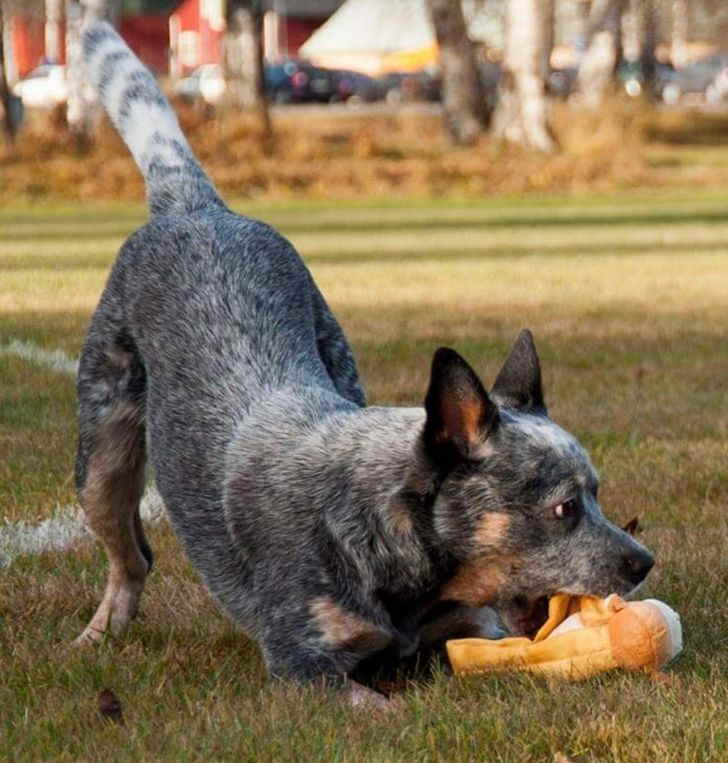
Red speckled, as the name implies, are covered with speckles all over the body. Red tan marks are usually located on the head, especially on the ears and around the eyes. Australian Heelers are born white or cream and darken with age, a trait inherited from the dingo.
In a study of 11 dogs, average life expectancy was 11.7 years, maximum 16 years. According to owners, when properly maintained, the life expectancy of a shepherd healer ranges from 11 to 13 years.
Being one of the hardiest and hardest-working of all dog breeds, healers have a personality to match. They are very loyal and will follow their owner anywhere. Dogs are very attached to the family and extremely poorly tolerated. long periods loneliness. At the same time, they are not intractable and will rather lie at their feet than try to climb onto their knees.
Usually they are more attached to one person than to the whole family, but with another they are friendly and accommodating. But with those whom they love, they form such a strong friendship that their owners adore them. That does not prevent them from being dominant and poorly suited for inexperienced dog breeders.
Attention! They are usually unfriendly to strangers. They are naturally suspicious of strangers and can be quite aggressive.
With proper socialization, they will become polite, but almost never friendly. They accept new family members well, but need some time to get to know each other. Dogs that have not been socialized may be too closed and aggressive towards strangers.
They are excellent guard dogs, sensitive and attentive. However, they are ready to bite anyone and poorly understand where power is needed and where not.
They usually find better mutual language with older children (from 8 years old). They have a very strong hierarchical instinct, forcing them to pinch everything that moves (including people) by the legs, and small children can provoke this instinct by their actions. At the same time, they are also suspicious of other people's children, especially when they scream, rush about and do not respect the space of the healer.
Australian Heelers always want to dominate and this often leads to problems with other dogs. They are incredibly dominant, territorial and have a developed sense of ownership. Although they are not looking for a fight, they will not avoid it either. Usually they are kept alone, or with one individual of the opposite sex. It is very important for the owner to occupy a leading, dominant position in the house.
Although they are designed to work with other animals, Australian Heelers must be trained so as not to cause problems. They have a strong hunting instinct and chase small animals such as cats, hamsters, weasels and squirrels. They can tolerate domestic ones if they grew up together, but not all of them. 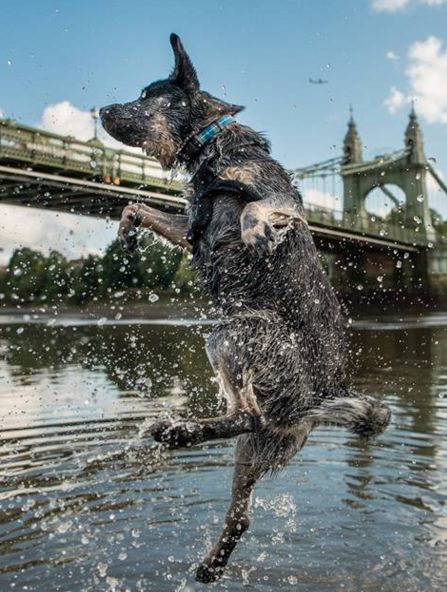
But they are very smart, and often fall into the top ten most intelligent dog breeds. Except for tasks that require special strength or sense of smell, there is nothing that a herding dog cannot learn. However, training may not be that easy. They do not live to serve man, they serve only those who are respected. Too many healers are stubborn and mischievous in training, and will only listen to the master who rules them as more dominant. The biggest test here is to keep the dog interested in learning. They get bored quickly, especially with repetitive tasks, and just stop listening.
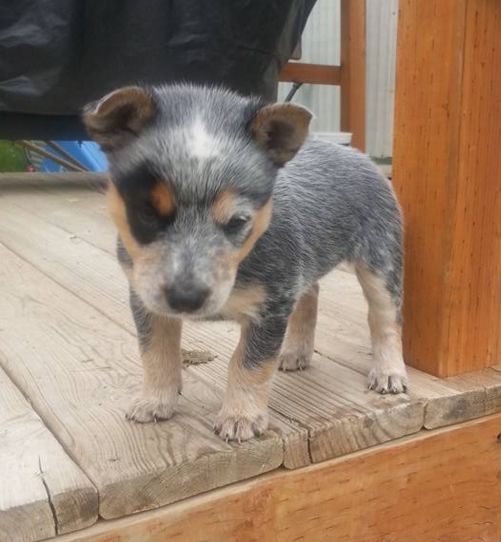
heeler puppy
They need a lot of work or walks. For most, the absolute minimum is 2-3 hours a day, and running, not walking. And this is the minimum. Australian Cattle Dogs need a very large yard in which they can run all day and its size should be at least 20-30 acres. They also love to run away. Being very territorial, they love to dig and have a strong curiosity. Almost everyone loves to study the world and just give a chance in the form open gate or gates. The yard must be very reliable, as they are not only able to undermine the fence, but also climb over it. And yes, they can also open the door.
Attention! Owners who are not able to provide them with activity or work should not get such a dog.
Otherwise, she will develop serious behavioral and psychological problems. Destructive behavior, aggression, barking, hyperactivity and other pleasant things.
No professional grooming. Sometimes combing, but in principle they are able to do without it. And what do you want? Dingo…
Sep 17, 2015 admin
FEATURES OF THE BREED
Strong and weak sides Australian Heeler how to use them
Among the variety of breeds today, the Australian Heeler is considered one of the most versatile breeds.
Years spent on improving the breed brought the Australian Heelers into the top ten most intelligent dogs (according to the research of the American professor of animal psychology Stanley Coren, 1980). These are not only working shepherd dogs, but also excellent family dogs, guarding the property and territory of the owner, capable of full dedication, perfectly performing any task and protecting children perfectly.
Australian healers are very fond of children, in Australia this moment is given Special attention. Most breeders in Australia believe that if a Heeler does not get along well with children, then this is not a dog and further breeding is not allowed. It is important from an early age to give the puppy to communicate with all family members, including children.
My dogs have constant contact with children of friends and neighbors who come to play with their dogs. Margot, Ozzy and Bondy are happy to obey the 7-year-old girl and readily carry out the commands that she comes up with on the go. Australians do not recommend getting dogs of this breed in a house where there are children under 4 years old. Healers are very energetic, small children do not always have time to respond correctly to sudden movements of animals.
When raising an Australian Heeler puppy, rules need to be laid down for the little Heeler to learn to follow. You need to gently and calmly explain to the dog what you want from it. Puppies need more praise. If he did something wrong, don’t scold too much, just don’t praise at that moment, I noticed from my dogs that they themselves quickly understand everything, watching my reaction and drawing conclusions.
Do not be surprised if a little healer, having got to you, at first will try to bite your legs. It's one of the instincts of this breed, they graze like that. For this, of course, there is no need to praise, you need to say “no”, “no” quite firmly, slightly pushing the puppy away, the way the mother pushes them away when she brings them up. At first, when establishing contact with the puppy, all your educational movements should resemble the movements of the puppy's mother. In the future, words will suffice. These guys are fast thinking.
My dogs learned very quickly that leg biting was not welcome and stopped doing it. The shepherd instinct can sometimes be very funny in a puppy. So our little Ozzy collected all the time various items around the house and carried them with joy and a sense of accomplishment to her bedding. There were many things to discover there. I didn't mind and let her have so much fun, it amused me. Then we all laid out in their places, and the next day it started again. With age, Ozzy herself stopped doing this.
I started teaching and educating my first dogs right away. When our third dog Ozzy arrived, I decided that I would not raise her, at least for two weeks I would be allowed to do everything. We began to look at each other. But when I said anything to her, I saw that she understood everything at once. Ozzy stared into my eyes, thinking, probably: “So what does she want from me?” She was very focused on me. Seeing that this approach works, I didn’t teach her at all, I played with her, talked, talked. Now, when we walk, she often walks next to me, hugging my leg and looking into my eyes. My experience exceeded my expectations. I don't know if this will work with other dogs, but I've learned that every dog needs a different approach.
The healers who live with me have not spoiled a single thing. For their classes, I provided them with bones, unnecessary cardboard packaging, old shoes. From a very early age, they understood that everything belongs to the owner, even food, and they never arbitrarily climbed to take something from the table.
If from an early age the puppy is allowed to test the strength of the will and authority of the owner, then in the future life with an Australian healer can turn into an endless struggle for leadership. This breed is definitely on its mind and is perfectly oriented in any situation.
The Australian healer can be moderately cunning and moderately stubborn, but until a certain point, until he realizes that such things will not work with you. He will adapt to you, study your character and understand what you like and what you don't. He will not bother you fussily, if you do not want it, he will wait until his time for a walk comes. But you must also understand him and allow him to realize his energy in sports, work or games. This friend will be sincerely devoted to you and grateful. Let your healer "blow off steam", let's "break away", but in the way you see fit. Otherwise, your friend, having accumulated enough energy in himself, will realize it as he sees fit.
The dogs that live with me quite clearly understand the language of a person and love to demonstrate this in every possible way with their behavior and attitude. They are really very smart, and it is not for nothing that the Australians say: "This dog is so smart that sometimes we feel like fools in comparison" .
Australian healers have a great sense of humor and will always smile slyly when they see that they can please and make you laugh. You will not get bored with these dogs, they are always in search of adventure, if they are not busy with work or training.
Very gentle in nature, they are at the same time suspicious of strangers and can be belligerent if the owner and members of the family or territory are in danger.
Australian healers are very strong, have excellent health and endurance. They are unpretentious in food. The dogs I have raised have excellent genetics. Were hardened in the Siberian climate, perfectly adapted to it and fell in love with snow.
It should be noted that this breed is not for everyone, Australian Cattle Dogs are active dogs that will always need space and movement.
Is such a dog suitable for a city dweller? In the event that you are an active person and like to visit fresh air. Then the Australian healer will be happy to accompany you on bike rides, run, swim, and keep you company while skiing. Will share with you any interesting pastime.
My dogs are very fond of novelty, because by nature healers are curious and they like to explore everything. Of course, it all depends on the nature of the dog, its temperament, but in general they are social dogs that do not tolerate loneliness.
I absolutely do not recommend chaining these freedom-loving dogs. They are excellent guards, but they need to be given a free territory or a well-placed enclosure so that the dog can see what is happening in the area.
In America, Europe and Australia itself, Australian Heelers have long been used as a companion dog, whose devotion is legendary.
Australian healers can be successfully used in various types training and sports with dogs. They perform well at agility and obedience competitions.
The Australian Cattle breed was bred to help people and these dogs want to be useful, they will gladly show you - "I can do it!" You can rely on them in everything, Australian healers are service dogs and human-oriented, which means that the dog should feel its purpose, and not lead a dull existence.
The Australian Cattle Dog tends to have an even, strong, joyful energy, and these dogs can also be used in canistotherapy. It was noticed that after communicating with dogs of this breed in nursing homes and rehabilitation centers, the elderly and the sick increased vitality and improved health.
The Australian Heeler starred in many feature films, the most famous of them "MAD MAX-2" (post-apocalyptic genre) Mel Gibson starring.
Breed development trends
The history of the breed has more than a hundred years, during this time not only the temperament and exterior have improved, but also the genetics of the Australian Heelers. In Australia, in the last 20-30 years, serious work has been carried out to improve the breed. Mentally unstable dogs were eliminated in breeding, certain non-standard colors were not recommended for breeding. The development of the Australian Heelers breed reached a new qualitative level with the advent of genetic tests in the late 90s.
The Australian Shepherd is everyone's favorite in Australia and Australians are justifiably proud of it. It is very popular in the USA, in Canada, and is becoming very popular in many European countries.
For the first time, Australian healers appeared in America after the Second World War, they were the first to be brought there by soldiers serving in Australia.
The development of the breed in America was not fast. There were few representatives of Australian healers, and in the American Kennel Club the breed long time referred to miscelanous -‘other ’, not referring to herding working dogs.
By 1969 there were 12 registered dogs in the club. Over time, lovers of Australian healers bred them in sufficient numbers for farm work, and gradually healers entered ordinary families and fell in love with the Americans.
For the first time in Europe, healers were brought to England in 1980. Most Australian healers in Europe carry American breeding lines with a few Australian lines added to them. This is due to the rather high export price and the difficulties encountered when exporting dogs from Australia.
Recently, many breeders in Poland, Germany began to check their dogs for PRA .
In many breed clubs in Europe, a test for PRA is mandatory and dogs that fail this test will not be bred.
Every year the popularity of Australian healers in the European rings is growing.
On the last World Championship 2013 in Budapest, where I happened to visit, quite a lot of Australian healers were exhibited - 50 individuals.
The Russians just have to get acquainted with this rare breed. Since 2008, several representatives of this breed have appeared in Russia, imported from Europe, and today no more than 10 litters have been born in the whole of Russia.
In Russia, Australian healers are just starting to appear at exhibitions. At the last, largest Russian exhibition "Eurasia 2013" , in Moscow, 6 representatives of Australian healers were registered.
In my opinion, the breed has a great future, and in 5-10 years, Australian healers can be found quite often in the rings of Russia.
We are pleased to present you a new breed of dogs on our website. In our country and in general in the CIS, this breed is not yet popular and, therefore, unknown. If you see this breed on the street, then you will decide that this is an ordinary “mutt”, and not a purebred dog with a breed age of more than 120 years.
We have a video about the breed here Australian Cattle Dog:
This dog breed has many names:
australian shepherd dog, Australian Heeler, blue healer, red healer, Queensland Heeler, queensland blue and Queensland Red Heeler, australian kettle dog, australian bouvier and finally just kettle dog(English Australian Cattle Dog).
This breed was called the Heeler not by chance. "Heel" in English means "heel" - and so, when driving livestock, he came to a trick - biting on the lower part hind legs naughty cows or stubborn rams without harming them.
The first breed standard was adopted by the Australian Cattle Dog Club and the New South Wales Kennel Club in 1903. FCI STANDARD No. 287.
The Australian Cattle Dog is a breed of dog from Australia that was bred to drive cattle over long distances. In the second half of the 19th century, Australian farmers were in desperate need of hardy intelligent dogs that could help them manage and move herds of cows and sheep, as well as that would be sufficiently resistant to harsh living conditions. Information about the breeds of dogs that were used by breeders to breed the Australian Cattle Dog is contradictory, but most tend to believe that such breeds of dogs were crossed: Smooth-haired marble collie (it is believed that this is the result of crossing an ordinary Collie and a Blue Italian Greyhound), Dalmatian, Bull Terrier, and finally, . As a result, a reliable, hard-working, patient and faithful shepherd dog was born.
Farmers really liked these tireless and quick-witted dogs.
They first came to America after World War II. Australian shepherd dogs brought with them american soldiers who served in Australia.
The Australian Heeler was brought to England only in 1980, after which they began to gradually spread throughout Europe.
Australian healers appeared in Russia in 2004. Around this time, Australian Cattle Dogs began to appear in Ukraine.
Compact and strong dog with good working qualities. Sufficiently strong, harmoniously built. Well-developed agility and endurance make the Australian Heeler unique in its kind.
Height males 46-51 cm, females 43-48 cm.
Body weight from 16 to 23 kg.
Very strong, robust dogs with well-developed muscles, a massive head, a powerful neck, small pointed erect ears and a fluffy, down-curved tail with a curving tip.
The difference between the Australian Cattle Dog is a kind of mask that covers one or both eyes.
The coat is of medium length, dense and harsh to the touch, the undercoat is short, the outer hair is thick, straight, adjacent to the body, so drops simply flow down the coat.
Colors of the Australian Heeler:
Blue: blue, blue flecked or blue spotted with or without other markings. Black, blue or fawn markings on the head are acceptable, preferably evenly distributed. The forelimbs are covered with tan to the chest and throat, with tan on the jaws; tan marks on the inside of the thighs to the front of the knee and on the outside from the metatarsus to the toes. Black markings on the body are not desirable.
Red speck: uniform speckling along the entire length of the body, including the undercoat (not white, not cream), with or without darker red markings on the head. Uniform markings on the head are desirable; red markings on the body are acceptable but not desirable.
The Australian Cattle Dog has an average life expectancy of 10 to 15 years. However, there was one out of the ordinary case.
On June 7, 1910, an Australian Cattle Dog puppy named Bluey was born. The dog worked as a shepherd for 20 years in a row, herding the flocks cattle and sheep! This dog died on November 14, 1939, at the age of 29 years and 160 days. This case once again confirms that an active life is always beneficial!
Previously, Bluey was considered the oldest dog whose longevity record no one could beat, but there are several other dogs that have lived about the same. You can read about them here.
Heelers are very hardy and can absolutely calmly endure long hikes, even in the hottest weather, these dogs retain good spirits and efficiency. The health of this breed is strong, but there is a tendency to blindness and deafness. Arthritis occurs less frequently with age.
They lend themselves well to training. The only minus of healers is their unbalanced character (the consequences of crossing with). Rumor has it that some Australian farmers, so that the healer does not run wild and has a softer and more accommodating character, transfuse border collie blood to him.
Currently, Australian Cattle Dogs are used mainly as guard dogs, in addition, they are loyal and reliable companions, devoted to their owner and his family. These dogs need constant exercise and sufficient space, both at home and on walks. Therefore, it is advisable to walk them from 3 hours a day. Healers need an attentive owner with a strong character who can put a hot-tempered dog in his place. It is not easy to raise and raise a dog with an admixture.
Healers are also known as excellent athletes and successful participants in competitions such as agility.
The Australian Cattle Dog was bred by English farmers around the 19th century. Its main purpose in those distant times was to manage grazing herds of livestock and their subsequent protection. Representatives of this breed are characterized by tirelessness, increased courage and extraordinary endurance. Until now, experts have not been able to breed a more successful herding animal, not only on the Australian continent, but even in the whole world.
The Australian Cattle Dog breed is loyal enough to its owner, is quick-witted and easily amenable to the basics of training. These pets have proven themselves as responsible cattle guards. In addition, they are very affectionate and loving, can constantly please their breeders and be excellent companions. According to available data, one of the representatives of this breed lived up to 29 years. About 2,500 puppies are born in Australia every year.

These pets adapt relatively poorly to the urban environment, which is why it is recommended to keep them in villages or towns. It should be noted that shepherd dogs need constant physical activity, active games outdoors. In a word, this is not a sofa dog that will peacefully snore next to the owner.
There are practically no special health problems in these pets. As noted above, this breed is classified as long-livers. However, how long the pet will live depends solely on how you care for the Australian Cattle Dog.
In general, like any other dog, representatives of this breed are carnivores. But even predators cannot constantly eat exclusively meat. What to feed an Australian Cattle Dog?
What to feed Australian Cattle Dog puppies? In fact, from the very first months for a small dog, there is nothing better than mother's milk. From about two months old, you can begin to transfer the puppy to "adult" food. Initially, it may be low-fat cottage cheese, but always with kefir. Later, you can start giving meat and some vegetables in the form of carefully ground minced meat. Literally from six months, the shepherd can already switch to normal feeding twice a day.
Despite its character and natural instincts, this breed is very easy to educate and train. This is due to the fact that the dog always wants to please only his master. How to achieve this? Of course, perform all the necessary tricks. The training of the Australian Cattle Dog implies properly organized lessons with a load. As a result, the breeder receives an obedient dog that obeys him implicitly.
Experts do not recommend taking a shepherd dog as not only the first, but also a working one, since not all breeders as a result manage to direct its energy in the right direction. For example, the desire to periodically bite cows on the legs is so strongly fixed in the psyche of the animal that it is often transferred even to the owners.
It should be noted, no matter how badly a puppy behaves, in no case should it be assimilated to the principles of violence. The thing is that initially this breed was bred exclusively for independent work. If the puppy believes that it is unnecessary or inappropriate to do this, then it can never be forced. The basis of animal training is always built on the basis of the characteristics of the breed, the personal qualities of a particular pet and the obligatory reward for the tricks performed.
In the 19th century, Australian farmers needed a dog that could carry out the shepherd's service: protect the herd and protect it from loss - this is how the Australian shepherd dog was bred.
Today, the name of this breed has many variants, for example: Australian Heeler, Queensland Heeler, Blue Heeler, Australian Herd Dog.
Breeding work on the breeding of this breed was not without the participation of the famous dog. In addition, when creating the Australian Heeler, dog breeds were involved: Australian Kelpie, and Collie. Such a "motley" mixture gave the new breed a mass positive qualities Therefore, Australian Cattle Dogs are distinguished by endurance, courage and tirelessness.
The name "healer" did not happen by chance. Translated from of English language"heel" means "heel", so "healer" is something like "heeler". It all started from the fact that these savvy "four-legged shepherds" nibbled on the heels of naughty sheep or cows if they did not want to go in a given direction. Now you see that these dogs are considered extremely smart for a reason.
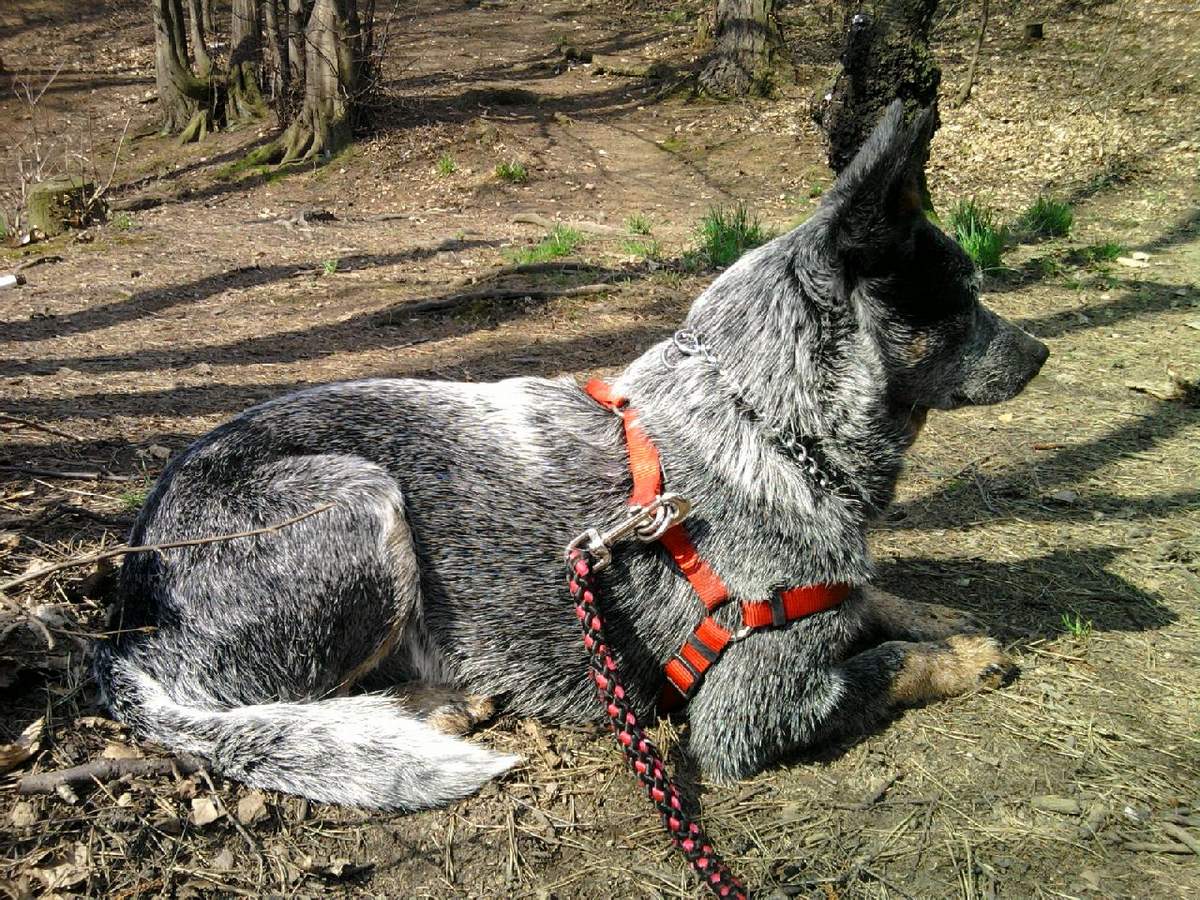 The Australian Heeler is another name for the Australian Cattle Dog.
The Australian Heeler is another name for the Australian Cattle Dog. About character... Australian healers - incredible loyal dogs. They are intellectual by nature, which means they have no problems with obedience or training. These dogs are unusually affectionate, they are hardworking, and they also managed to become famous for their ability to carry out guard duty. In addition to service qualities, Australian healers are real beauties, they have an unusual coat and a variety of colors. Today, many use these dogs not for their intended purpose (as shepherds), but as companions. Also, one cannot fail to note the unique performance of Australian shepherd dogs.
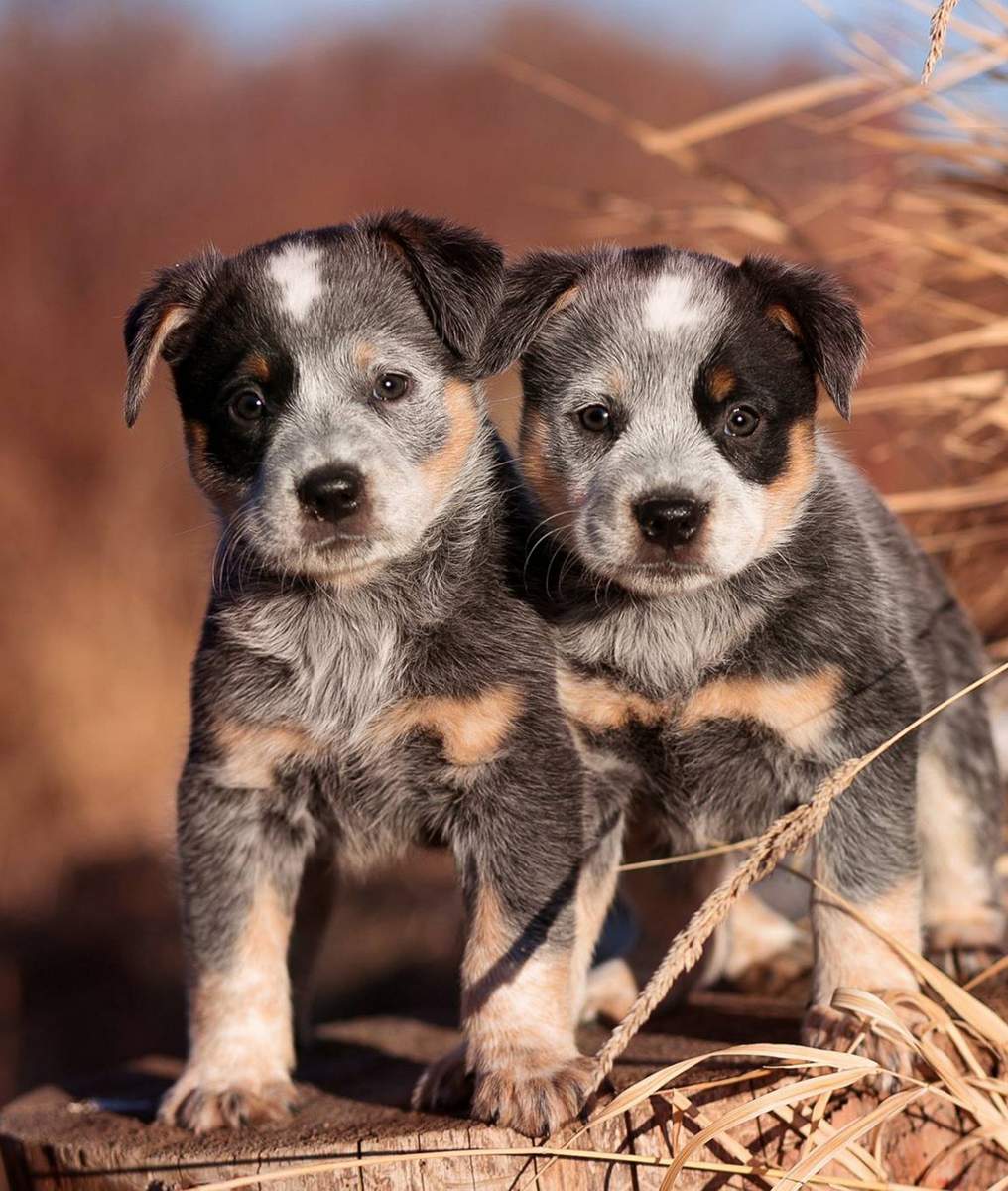
If strangers come to visit you, they may think that the dog is looking at them suspiciously and that it is not quite balanced. This is not true. From history, we know that these dogs are used to keeping order in the herd, perhaps this quality has been preserved to this day on a subconscious level, so the dog carefully monitors everything that happens around it.
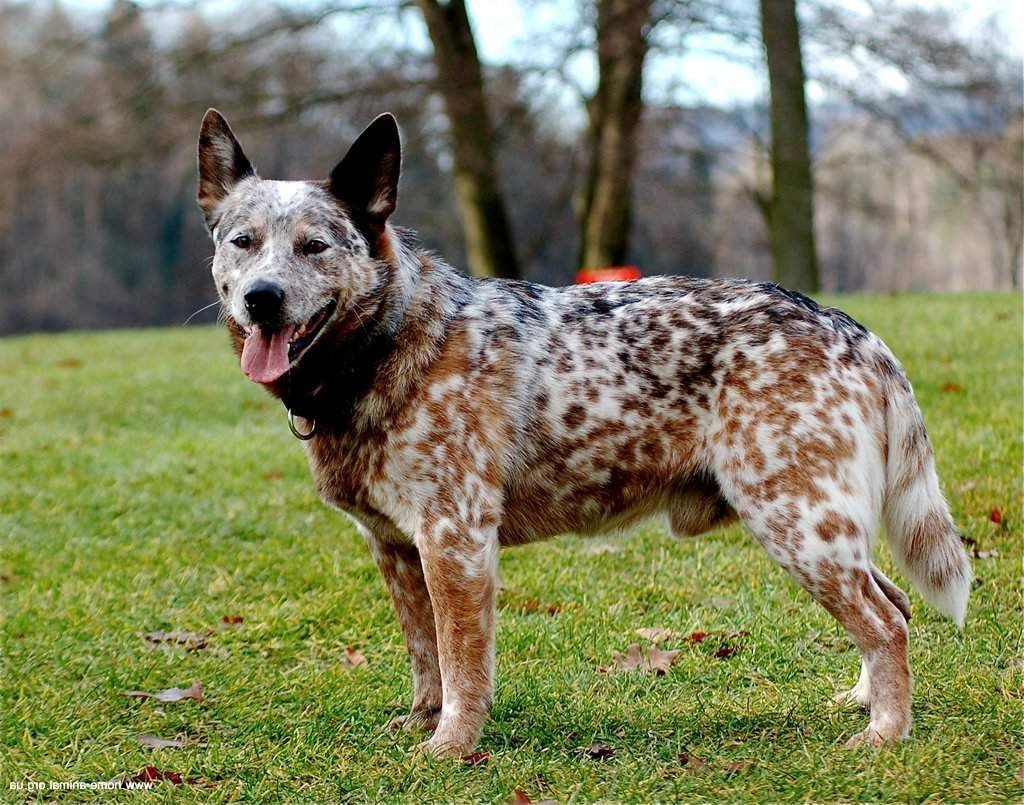 In the color of these dogs, "traces" of Dalmatians are visible.
In the color of these dogs, "traces" of Dalmatians are visible. Options appearance healer... These dogs grow about 51 centimeters at the withers, the weight of an adult Australian healer is from 16 to 23 kilograms. The coat is short, the pile is straight and hard. The colors of representatives of this breed can be: red with black marks on the head, blue and blue with marks of black or red shades in the head area. Newborn puppies of this breed have one incredible feature: they are all born white with black spots, and then they begin to acquire the color that will be in adulthood.
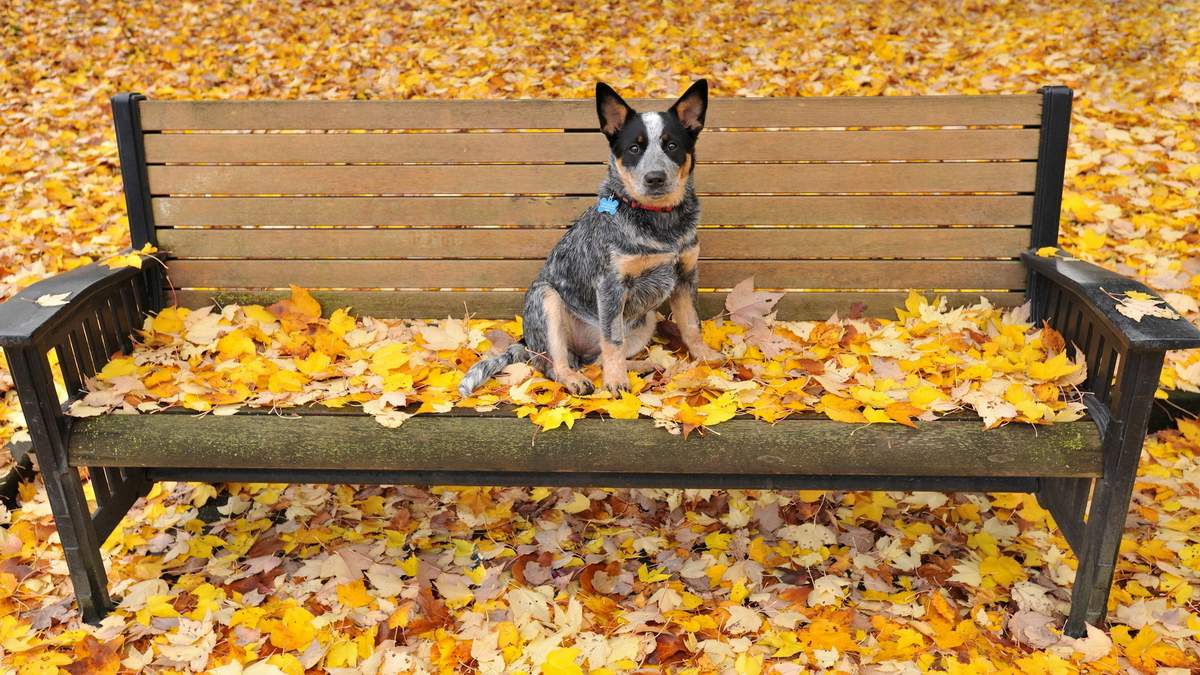
About upbringing... For dogs of the Australian Heeler breed, a sense of hierarchy is important. These dogs are naturally endowed with intelligence and fortitude, so they only need an authoritative owner with a "firm hand". Do not forget that these dogs are not devoid of temperament, this must be taken into account when training, although, according to professionals, this quality does not affect the trainability of healers in any way, they are one of the most diligent pupils.
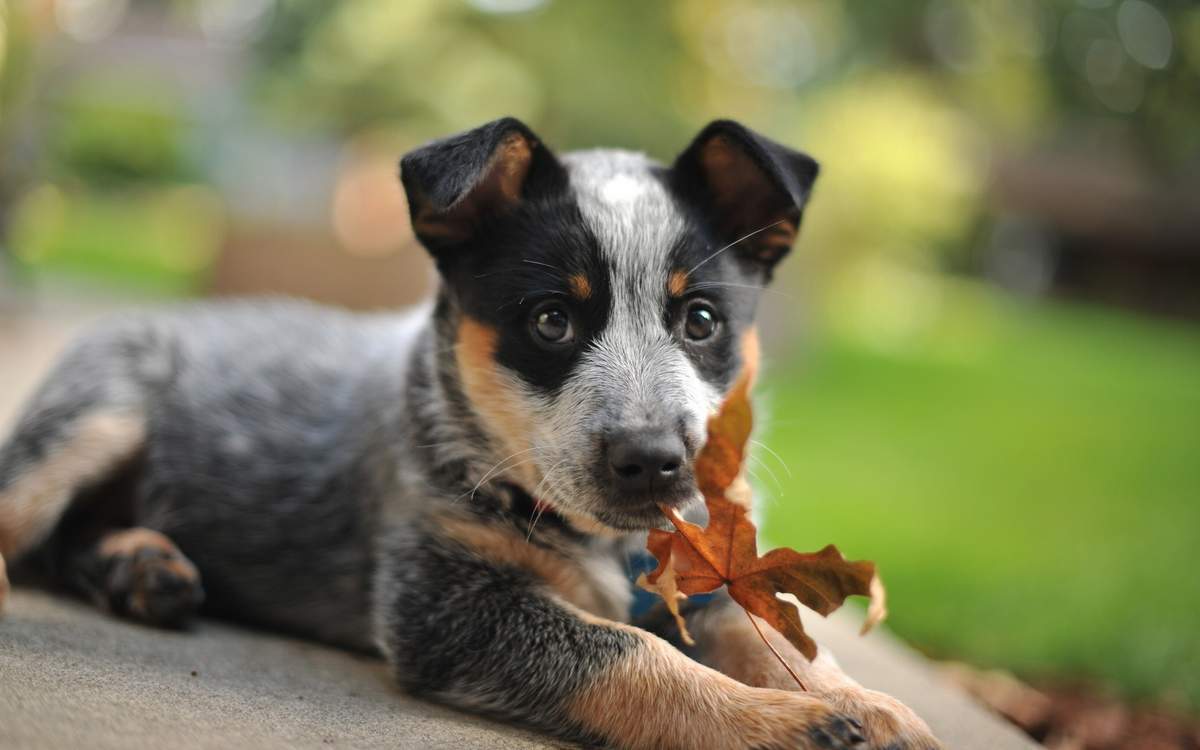
About the content... In order for your healer to feel comfortable and healthy, do not forget that he regularly needs walks in the fresh air (which is why healers are recommended for living in a private house or countryside). In addition, the Australian Cattle Dog needs exercise, it must move in order to develop its muscular apparatus.
Subject to all standards of keeping the Australian Heeler, this dog will delight you and your family for many years, because it is considered one of the long-lived breeds.
If you find an error, please highlight a piece of text and click Ctrl+Enter.